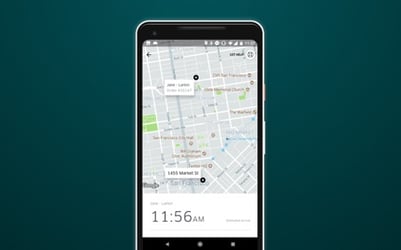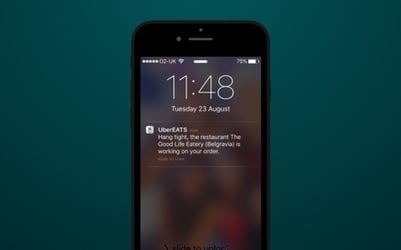Share this
How to Develop a Food Delivery App like UberEATS: Models, Features, and Marketing Tips
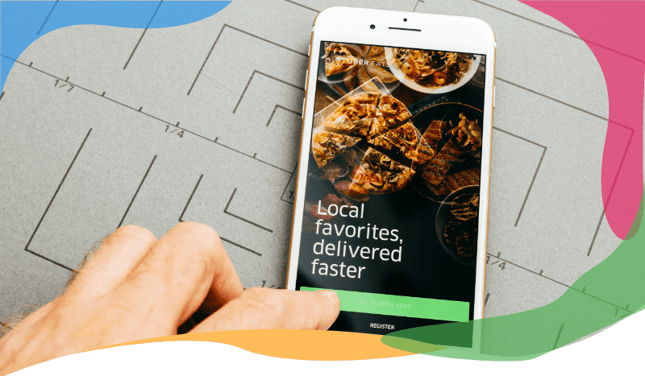
Inspired by UberEats, FoodPanda and GrubHub success, food delivery apps start popping up here and there. Still, building a food marketplace is not that easy.
Platform owners should think of one app for customers, another for courier and include admin panel development to their list of expenses.
Sounds pretty complex, right? No worries! We’ve created this guide to help you sort everything out. So if you want to find out more about food marketplaces, their models, main features and marketing tips – stay tuned.
Food Marketplace Models
Currently, two models prevail – food ordering and food order & delivery platforms. The main difference is that ordering marketplaces do not provide delivery services. They act as an aggregator offering nearby eateries to its users. These systems gather information about food venues (location, menu, rates & reviews), and customers can access this data to pick a place.
Main examples of order-only platforms are Zomato, Otlob, Delivery Hero and Supp.li.
Instead, food delivery model provides full logistics support. Thus, eateries no longer need to worry about delivery means. Order & delivery platforms work great for small restaurants and other minor venues. These eateries often don’t have enough resources to establish their own delivery so they use the platform’s couriers for a free.
As for order+delivery, most popular apps are UberEats, GrubHub, Swiggy and Domino’s Pizza.
What to Consider Prior to the Development?
Mind that with food marketplaces you can’t put all the needed features in one app. For example, well-known UberEats consists of Customer App (for clients), Delivery App (for couriers) and Admin Panel (for restaurants). Mind that prior to calculating software development cost, you should define must-have features and those that can be skipped. Here I mention the most important ones.
Customer app features
Registration & profile: The process of creating an account should be fast and easy. Most apps use email+password+phone number combination or integrate their platforms with Google, Facebook or Twitter. After the registered users can manage their profiles adding such details as the delivery address, payment details, photos, etc.
Search option: Users search for nearby venues or choose eateries by dishes they serve, name or location.
Placing an order: It should be possible to add dishes to the shopping cart, edit or remove them if needed. Finally, customers should see the summary or their order and choose the delivery means.
Payment: Make sure to integrate a popular and secure payment system like a credit card, Stripe or PayPal.
Order tracking: Devs implement Location API (Android) or CoreLocation framework (iOS) to let customers find the current location of their courier.
Notifications: Information sent via push notifications or SMS works perfectly for busy customers. People don’t constantly track their order status so letting them know if the food is being prepared or on its way is good for user engagement.
Feedback: Clients’ ratings and reviews are a great source to find out how good your service is and what issues customers face. And, of course, fix them.
Courier app features
In order to pick orders up and get paid for their job, couriers also need their own delivery app with unique features. They include:
Registration & profile: By creating a profile, couriers get access to the system’s database to check recent orders.
Order management: The personnel should be able to accept or decline delivery requests. Couriers toggle the ‘online’ button and start accepting orders or go ‘offline’.
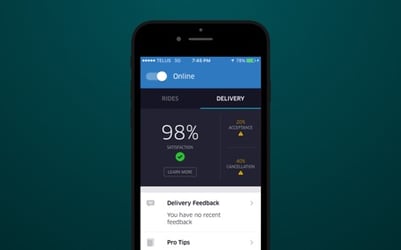
Status updates: In order for the clients to be aware of order processing, couriers set statues along the way (like Accepted/declined, Delivery in progress, Delivered).
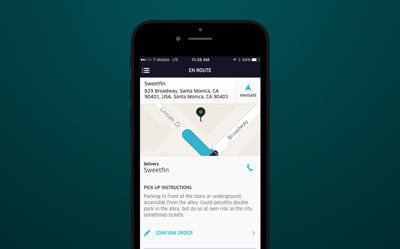
‘My earning’ screen. Couriers should be able to check their daily and monthly earnings and withdraw them (either manually or automatically).
Admin panel for restaurants
Registration and profile management: This feature works the same way as described previously. Still, eateries should be able to add business’ details like their names, location, etc. to their profiles.
Content management: It’s important to let restaurant staff add or manage details about the dining place (its name, address, working hours, etc.). Also, they add names, photos, and description of dishes and set the prices.
Order management: The staff tracks all incoming orders and updates their statuses. Real-time updates on the food preparation process, its completion and delivery are also required.
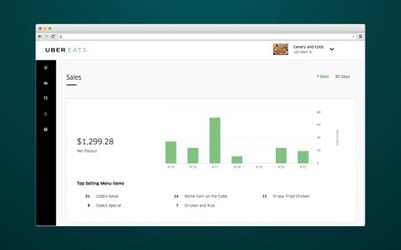
Payments: In the case of delivery apps, payment should be released as soon as the customer confirms successful delivery.
Marketing Tips
Sure, it’s very important that your application works properly. Still, it can’t guarantee the app’s success. That’s why you should understand who you build the app for and what features are lacking in similar services. Only this way you can motivate users to stop specifically on your app.
Find out who your target audience is
Start with defining your audience. Most probably, your app will be used by busy executives and office workers that don’t have time to cook. So arrange some business lunch delivery to make your app stand out.
The other category is people with children. They often eat out and when having no time to do that will turn to your app. Offer family-style lunches and dinners, and think of adding some discount system.
Finally, it’s tech-savvy millennials who tend to try everything new and promising. They were the first to try FoodPanda, UberEats, and Swiggy, so the stakes are high that they will be your first users too. Think of adding vegetarian and gluten-free menus, new delivery ways, integrations with Facebook or Instagram to turn this audience on.
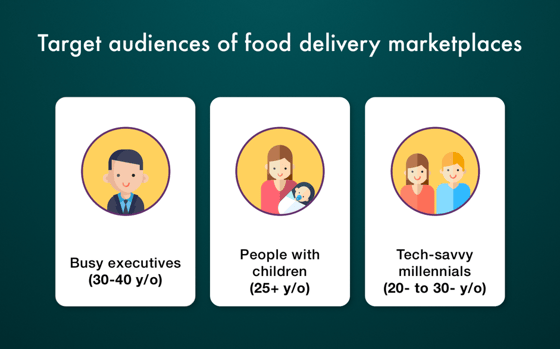
Make value proposition, not an UberEats clone
In order to build a successful product, it’s vital to understand your users’ pains. When it comes to eateries, their staff expects the platform to be fast and simple. They have lots of their own clients and little time to sort everything out. When restaurants see incorrect order statuses in your app, face delivery issues, bugs, or cannot customize the order they may quilt working with you.
Also, remember that security always matters. Think of some verification means so that chefs will know they’re handing the food to the right person.
Finally, make sure to provide fast and efficient support that is available 24/7. If something goes wrong with the system, your partners will depend on you to fix it.
But cafes and restaurants are not the only users of your platforms. There also are actual customers. What do they expect? A unique proposition combined with great UX/UI interface and app functionality.
But the app is not the only thing to pay attention to. If you’re developing an order & delivery platform and look for couriers, make sure they know how to use Google Maps, are polite and know the town they live in.
Another thing is the delivery fee. Customers won’t pay more for the delivery than for actual food, so try charging a fee based on the distance, delivery hours, etc.
In conclusion, I’d like to say that food delivery platforms have great potential if they are built properly. That means paying attention to your client’s problems and offering them new and unique solutions. And, of course, hiring a team of experienced developers as they are responsible for the system’s convenience and performance.
About the author:
Sergey Lypchenko is a technical writer at Cleveroad. It is a web and mobile app development company located in Eastern Europe. Our main goal is to develop first-rate and competitive software for our customers. My mission is to provide people with interesting material about innovations in the world of IT.
Topics:
Online Ordering
Share this
- December 2025 (7)
- November 2025 (1)
- October 2025 (4)
- September 2025 (10)
- August 2025 (10)
- July 2025 (7)
- June 2025 (9)
- February 2025 (1)
- January 2025 (2)
- December 2024 (2)
- April 2024 (1)
- January 2024 (1)
- December 2023 (3)
- November 2023 (15)
- May 2023 (21)
- April 2023 (8)
- March 2023 (5)
- February 2023 (67)
- January 2023 (156)
- July 2022 (20)
- June 2022 (60)
- April 2022 (2)
- February 2022 (17)
- January 2022 (26)
- December 2021 (15)
- November 2021 (9)
- October 2021 (1)
- June 2021 (1)
- May 2021 (3)
- March 2021 (5)
- February 2021 (5)
- November 2020 (5)
- October 2020 (1)
- September 2020 (2)
- July 2020 (1)
- February 2020 (1)
- May 2019 (3)
- April 2019 (3)
- March 2019 (1)
- January 2019 (11)
- November 2018 (1)
- September 2018 (4)
- August 2018 (4)
- July 2018 (6)
- June 2018 (4)
- May 2018 (18)
- April 2018 (10)
- March 2018 (9)
- February 2018 (14)
- January 2018 (19)
- December 2017 (10)
- November 2017 (10)
- October 2017 (18)
- September 2017 (12)
- August 2017 (17)
- July 2017 (5)
- June 2017 (6)
- May 2017 (2)
- January 2017 (1)



